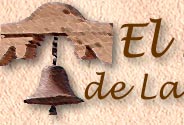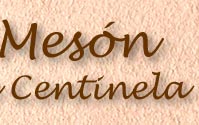At first sight, Chimayó may seem to be just another Hispanic village, one of dozens that dot New Mexico's semiarid north-central highlands. Certainly, all these villages date back to the time of Spanish, then Mexican, rule over New Mexico from 1598 to 1846, the year the United States Army occupied Santa Fe. What's more, all of them are distinguished by Spanish Colonial architecture, which time and man have toyed with but have not destroyed, and all but a few bear such sonorous Spanish names as Rociada, El Rito, Ojo Caliente, Las Trampas, and Chamisal. Indeed, these villages, with their curious blend of cultural attributes, are unique to this corner of the American Southwest. But a closer look at Chimayó confirms that it differs from its fellow villages in substance and spirit. For one thing, the name "Chimayó" (pronounced chee-my-YOH) is not Spanish. It derives from "Tsi-Mayoh," the Tewa Indian name for one of four sacred hills that soar above the valley and mark the cardinal directions. Apparently, the Pueblo Indians, who have inhabited New Mexico since the twelfth century, believed they shared their land with supernatural beings, and that the high flat crests of Tsi Mayoh and its three counterparts-each with a dreaded cave or subterranean labyrinth-were the dwelling places of the War Twins, powerful deities who guided the Tewa people from some mythological underworld to their present place in the sun.
Chimayó lies in a valley made fertile by the Rio Santa Cruz (Holy Cross River). Noted for its orchards, chili peppers, weavings, and miracle-working mud, the village is twenty-five miles north of Santa Fee, forty-five miles south of Taos, and 6,400 feet above sea level. To the east, dry hills lightly clothed in juniper and piñon serve as stepping stones to the Sangre de Cristo Mountains. (Those tall peaks, snow-clad for much of the year, were named "Christ's Blood by Spanish explorers as they watched the setting sun "ignite" the snow.) Some twelve miles to the west the fabled Rio Grande slips past the San Juan Indian Pueblo (Oke-Oweenge) on its journey to Mexico.
The Spanish settlers who founded Chimayó in the seventeenth century chose a site of an abandoned Tewa pueblo to build their "new world." At that time the pueblo's ruins may have stood in plain sight: now they lie hidden to all but an archaeologist's eyes. Yet in Chimayó something more that that remains of its Indian past: a sacred pool of mud.
According to Tewa legends told by nearby Indian pueblos, Chimayó valley and its' environs were once volcanic. In the distant past, so the story goes, fire, smoke and hot springs burst from the earth. In time, the valley cooled and the springs vanished, leaving behind a pool of mud. As soon as the Tewa people recognized its healing properties, they called the mud "blessed earth" and revered its source as sacred.
According to tales from Spanish Colonial times, the pool was in El Potrero, a small village absorbed by Chimayó. The settlers were convinced of the mud's powers, when they learned of it from the Tewas. The mud was used freely until 1814, when a prominent citizen of El Potrero, who was a devout follower of El Señor de Esquipulas, the Black Christ worshipped in Guatemala credited with healing powers, discovered a crucifix buried near the hole or sacred well from which came the health-giving earth. He then got permission from the Archbishop of Durango to build a church in the place where he found the crucifix and that had "El Posito," or the sacred hole. The church was dedicated to Nuestro Señor de Esquipulas and is the site of present day Santuario de Chimayó.
El Santuario sits in the dusty square of El Potrero, on a hill overlooking green fields and arid foothills. In turn, the Indian's sacred hill, Tsi Mayoh, lies behind the church. The plain adobe fašade, topped by twin bell towers faces County Road 98, the road that brings the church thousands of pilgrims: the ailing of all ages, the valley's faithful folk, and the occasional sightseer
The approach to the church is through the tall double doorway set into a thick adobe wall. Where wall and doorway meet, one billows above the other, suggesting the shape that emulates the sacred Indian hill in the background. The Santuario is listed in the National Register of Historic Places and is maintained by Holy Family Parish which is guided by the order of the Sons of the Holy Family. The original altar screens have been recently restored under the auspices of the Museum of New Mexico and the Archdiocese of Santa Fe. The Santuario de Chimayó is visited by thousands of pilgrims each year, each seeking solace and healing, or even a moment of peace from this modern world.
Chimayó has preserved one historical treasure none of its fellow villages can match: its central square, the Plaza del Cerro. This rectangular plaza, built to resist Indian attack, has continuously inhabited since its adobe dwellings were meant to withstand attack-not from the pacified Pueblos-but from raiding Apaches, Comanches or Utes. The dwellings abut each other and rim the entire plaza. Only three narrow entrances were left for passage, and a watch tower (now obscured by a barn), was erected on the south side (The tower is now located on the grounds of Rancho Manzana). The earthen roofs, originally flat, were proved with parapets to shelter defenders. The walls of dwellings, built of adobe bricks were, and still are two to three feet thick-not just for strength, but for insulation as well to keep the rooms cool in summer and warm in winter.
The word adobe is from the Arabic. A mixture of mud, sand and straw molded into bricks and then baked in the sun, adobe probably originated in Mesopotamia, today's Middle East. It arrived in Spain with the Moorish invasion of 711 A.D. Adobe brick and the architectural style it spawned in Spain were brought to the Americas by the first Spaniards to settle in Mexico. From there, the adobe style migrated to New Mexico with Juan de Oñate's part of soldier-settlers and remained the primary building style until 1850 when New Mexico became a U.S. territory.
While today's Plaza del Cerro, with its pitched metal roofs, aging automobiles, and electric cables, is clearly not the plaza of Chimayó's childhood, a strong ambience of the past prevails. This past is maintained and exhibited in the Chimayo Museum, which is housed in the the northeast corner of the plaza, in the house of the late José Ramón and Petrita Ortega.
The soil of this well-watered valley produces a superior chili pepper, much prized in New Mexico. The place to enjoy it in country-style cuisine is the Rancho de Chimayó, situated between Ortega's Weaving Shop and Galeria and the Santuario de Chimayó on County Road 98. The restaurant's exterior is hung with fiery ristras, long strings of dried red peppers. The interior is lovely divided into salons decorated in Hispanic style much like it was in the late 1800's when inhabited by the Jaramillo family. The Rancho de Chimayó is run by the Jaramillos, another local family whose roots reach back to the early eighteenth century. The restaurant has operated over 40 years and is award-winning, once recognized by the National Restaurant Association to be among one of the ten best restaurants in the United States.
On the High Road to Taos, (NM 76) about one mile east of its intersection with County Road 98 (and across from El Mesón de La Centinela) is Centinela Traditional Arts, where seventh-generation Chimayó weaver, Irvin Trujillo, and his wife, Lisa, continue the weaving traditions and exhibit their world-renown, award-winning weavings. Here on the surrounding ranch, Irvin's sister, Patricia Trujillo Oviedo, raises Churro sheep which are sheared for their wool that is used to produce yarn for the traditional woven blankets.
Across the road one driveway east is Oviedo Carvings and Bronze and Centinela Ranch Equine Facility. Here award-winning artist, Marco A. Oviedo, creates and exhibits his traditional woodcarvings and contemporary bronze sculpture at his studio/gallery. Marco is also an animal scientist-reproductive physiologist, and practices his skills breeding rare mammoth donkeys and cross-bred Spanish horses.
From Chimayó, the High Road to Taos leads northeast skirting the Sangre de Cristo Mountains, penetrating deeper into Hispanic New Mexico. About three miles from Chimayó, a road sign on the right announces: CORDOVA. Then an access road whirls down into that hilly village, and a sign on a fence declares, GLORIA LOPEZ, WOODCARVER. Inside her shop Gloria greets travelers warmly: she may even discuss her live and work as their eyes roam over dozens of pieces carved in white and brown wood (pine, cedar, and aspen). Some are saints or nativity scenes, others are stylized birds perched in stylized trees.
After Cordova, the High Road gets indeed-8, 600 feet above sea level! Within minutes, the village of Truchas, with its bright tin roofs, rises on the right edge of the plateau, against the Sangre de Cristo Mountains. The tall Truchas peaks are still dusted with snow, yet June is more than half over. It was in Truchas (meaning "trout") that Robert Redford filmed The Milagro Beanfield War, a tale of conflict between villagers and land developers. In Truchas you can visit Harry Cordova, a Truchas weaver, and other galleries that have recently appeared on the scene.
About five miles northeast of Truchas, the High Road intersects the central plaza of Las Trampas, a village whose name alludes to the traps used in times past to catch beaver. (This area was home ground to Kit Carson, the nineteenth century frontiersman, and its pine forests now bear his name.) Las Trampas still contains what may be Hispanic New Mexico's loveliest and most pristine adobe church, San José de Gracia.
According to the record (or at least legend), Las Trampas was settled in 1751 by a dozen families from Santa Fe. Deprived of a village church, the twelve family heads set out to construct one, assisted by women and children. When they completed the church in 1776, they named it San José de Gracia, though it was widely known as the Church of the Twelve Apostles," in recognition of those who built it.
San José's exterior, both front and rear is artfully shaped with those curving vertical lines and angular planes so typical of Hispanic adobe churches. The walls are four feet thick; the fašade has an unusual outdoor wooden coir loft, and the twin bell towers are rectangular and built of wood. The church served the community as a fortress in times of attack from raiding Indians, like the Apache, Comanche and Utes. The oldest Bell, Refugio, still hangs in one tower, but its companion, Gracia, was stolen in 1909.
Modest and naïf as this homemade church may be the interior is deeply pleasing. Here you speak in a hush, even if you are excited by the wide wooden planks of the floor, the candles on crossbars hanging from the ceiling on adjustable ropes, the wooden rafters so beautifully embellished and the few high windows that admit rich golden light on sunny spring days. The art at the altar and on the walls is also precious, well worth the time. True, some fine old works have vanished, into either safer havens or unscrupulous hands, but no matter: this is still a place to sit on a worn wooden bench and muse. The church is listed in the National Register of Historic Places.
To the west of Chimayo are six Indian Pueblos within a 15 mile radius: Nambe, Tesuque, Pojoaque, San Ildefonso, Santa Clara, San Juan (now known as Oke-Oweenge). Thirty miles west is Los Alamos, the birth of the "Atomic Era" and Bandelier National Monument, with its prehistoric ruins dating to pre-Hispanic era. Between all these is Española, the original the crossroad to history.
North-central New Mexico is a small world where cultures have clashed, coexisted and, to some extent, blended. First, Native Americans, then Spaniards, and finally Spanish-Americans have inhabited this microcosm, now strongly influenced by Anglo-Americans. But even if the adobe churches become national monuments, as some in the state already have, the adobe dwellings will eventually crumble or be replaced by modern housing. Chimayó with its Indian background and its stubborn Spanish will to survive cannot avoid further change. However, there is still a chance to capture what is left of its unique ambience before it vanishes into the thin, dry air of the great New Mexico plateau.







